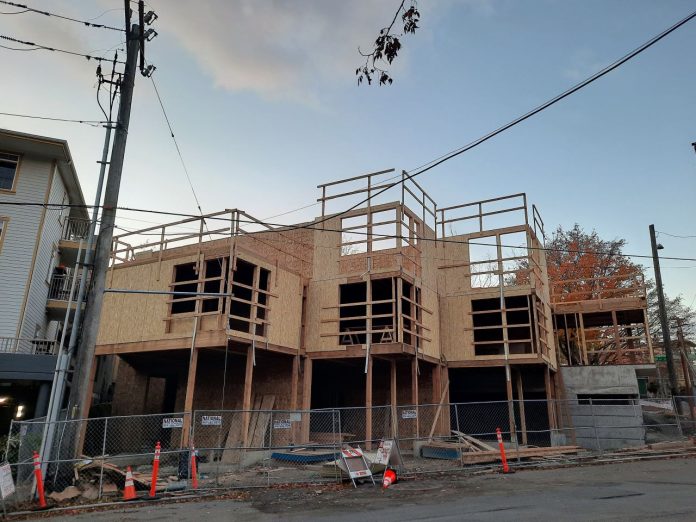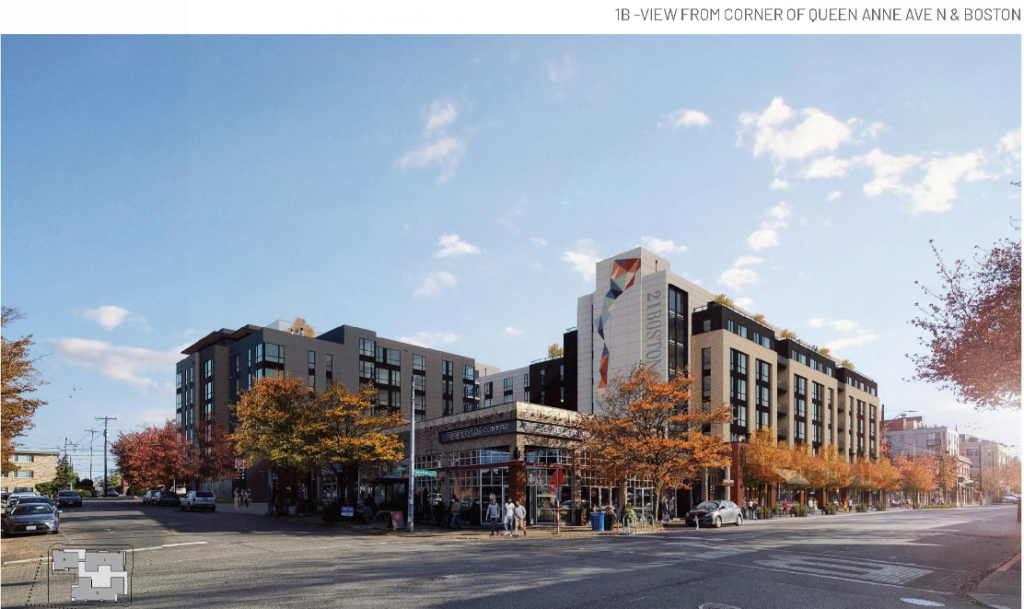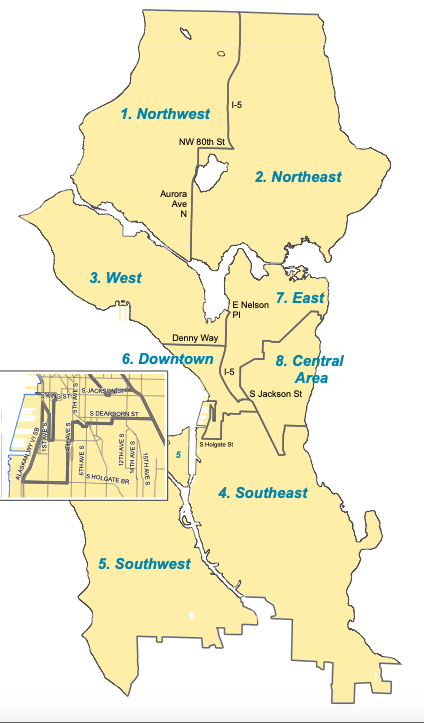
Design review is currently under the microscope, with a stakeholder process evaluating the problems of housing delays and racial inequity. The Seattle City Council recently passed an extension of a Covid-era design review exemption for affordable housing projects. Councilmember Dan Strauss and the Mayor’s Office also floated a pilot program allowing all housing applicants to “opt out” of full design review, but that proposal is going through the long process entailed with State Environmental Policy Act (SEPA) review.
Meanwhile, the City will still operate the program as is and needs 21 qualified individuals to fill open positions at the eight district boards that make up the program. You may have been discouraged in the past, being one of the many urbanists shut out of the process last time, but we’re optimistic things are changing at City Hall due to a greater awareness of design review woes and an administration that is more sympathetic and tuned in on this issue than its predecessor.
Now is your chance to get selected and help the boards be more representative of the full range of voices passionate about housing and designing a city that is welcoming to all.
The deadline for applications is December 31.
While design review meetings are typically scheduled on weekday evenings and can be tedious affairs, design review board members are in a position to have a major impact on housing by taking a more proactive rather than obstructive tact, helping architects finetune their designs in a timely fashion and get worthy design departures approved.
Board members interpret whether a new development upholds city, district, and, when applicable, neighborhood-based design review guidelines. If a project doesn’t get a recommendation from a design review board, it effectively blocks the project from getting its land use permit and thus getting built, since the Seattle Department of Construction and Inspections (SDCI) almost never overrules the boards. The land use permit clears the way for a construction permit, which is the phase at which professionals at SDCI vet the project for issues around safety, engineering, and habitability. The volunteer design review boards are focused on aesthetics and the external aspects of the building that have less bearing to the people actually living inside them.

Seattle’s design review boards wield real power. In 2020, the West Seattle Design Review Board famously withheld approval for the development of 323 new homes atop of the Queen Anne Safeway, citing concerns over brick color and design features like “the proper size of planters, modulating storefronts, [and] the number and caliber of businesses likely to call that frontage home.” The project was delayed, but thankfully the developer stuck with the project and is the process of bringing the homes to market and delivering $6 million to the City’s affordable housing trust fund via the Mandatory Housing Affordability (MHA) program.
Not all projects are so lucky. The uncertainty and delays caused by the design review gauntlet has scared off some homebuilders and blocked projects and the affordable housing contributions that come with them.
Here’s how to apply:
The necessary steps are to fill out this application form, provide a cover letter and resume, and email the folks at SDCI listed here. But that only checks the box of formalities. What you really need to do is follow these special guidelines to assure your application stands out for the good folks at the city who are looking for fresh new folks to fill these slots. This is what they’re looking for:
On your application:
- Under “How did you hear about this opportunity?” put down The Urbanist.
- Check every single board region and every single board position. This allows the folks at the city more flexibility to get good candidates like you slotted where they can. Limiting yourself to a few regions and a few positions makes that harder.

For your cover letter:
- Mention you are familiar with Design Review, Design Guidelines, and the process to get projects approved in the city and be respectful of the program.
- Make sure you frame your letter in the role of the board and respect what they do. It’s okay to mention you recognize the housing crisis and want to provide a voice to help improve the much-needed housing we need to improve the city.
- Reference the desire for recognizing the community impact on new buildings.
- Reference the absence of voices like yours on these boards, voices that support adding homes and improving our city for the future.
- Get familiar with the land use code section on what the role of the board members is and what the program places on development. Frame the letter in respect of the code.
Be yourself, be passionate, and be sure you follow this guide. Working together, we can help to make sure Design Review reflects the full breath of folks in our city who want to build a better community for all. Good luck!
The editorial board consists of Natalie Bicknell Argerious, Ray Dubicki, Ryan Packer, and Doug Trumm.
The Urbanist was founded in 2014 to examine and influence urban policies. We believe cities provide unique opportunities for addressing many of the most challenging social, environmental, and economic problems. We serve as a resource for promoting and disseminating ideas, creating community, increasing political participation, and improving the places we live.

